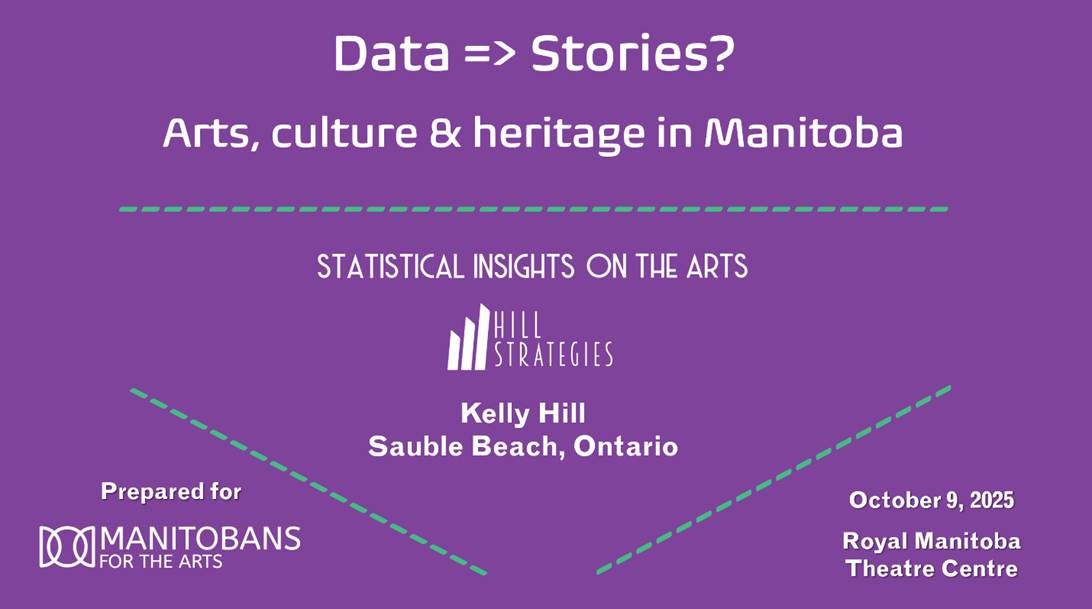Data => Stories? Arts, culture & heritage in Manitoba
Summary of my presentation in Winnipeg on October 9
For a presentation in Winnipeg for Manitobans for the Arts, I pulled together my existing statistics and created a few new graphs about the arts, culture, and heritage in Manitoba. Using the data as a jumping-off point, attendees worked to unearth stories about the situation of the arts in the province. The presentation also briefly covered information sources, data gaps, custom surveys, and question design.
The key data from each section of the presentation are listed below, while the full presentation is available here in pdf form (7.5 MB).
Environmental and other organizational data
Manitoba organizations’ commitment to net zero is around the national average
More Manitoba organizations are “considering” a net zero commitment than the national average
Inflation is (still) a major challenge for cultural organizations in the province
Economic data
Significant decreases in core cultural GDP, both recently and longer-term (adjusted for inflation and population)
Core cultural GDP is below the national average, but higher than any province other than the 3 largest ones
Government spending on culture per capita (by the province & municipalities) is slightly above the national average
However: slight reduction over the past 15 years (adjusted for inflation and population)
Consumer spending on culture is high as % of total spending
Consumer spending on arts items is similar to other provinces as % of total spending
Cultural workers
Lower concentration of cultural workers than the national average
Similar concentration in Winnipeg as other Prairie cities
Not much change in cultural jobs over the last 13 years, unlike many other provinces
Wages are lower for professional and technical cultural workers than professional and technical workers in other industries in Manitoba
Financial stress, unaffordable housing, and unpaid work are common among cultural workers
Artists
Lower concentration of artists than the national average
Similar concentration in Winnipeg as other Prairie cities
Indigenous artists make up a larger proportion of Manitoba artists than any other province
Artists’ incomes are 42% lower than all Manitoba workers
Difference is 39% across Canada
Other challenges: grants, sales, artistic spaces
Low incomes and other challenges lead to financial stress and unaffordable housing
Equity
Income statistics are depressingly clear:
Indigenous artists’ $ earnings < non-Indigenous artists $ < Indigenous cultural workers $ < non-Indigenous cultural workers $
Women artists $ < men artists $ < women cultural workers $ < men cultural workers $
Other topics
During the presentation, we also discussed:
Sources of provincial information on the arts, culture, and heritage
Data gaps, including arts education, arts participation, international comparisons, and other environmental data
Custom surveys and question design, including sample questions from a survey of theatre audiences



